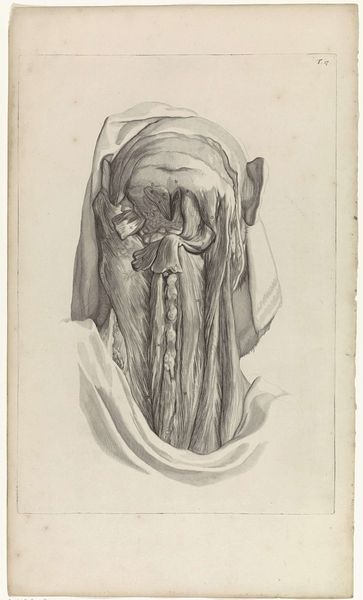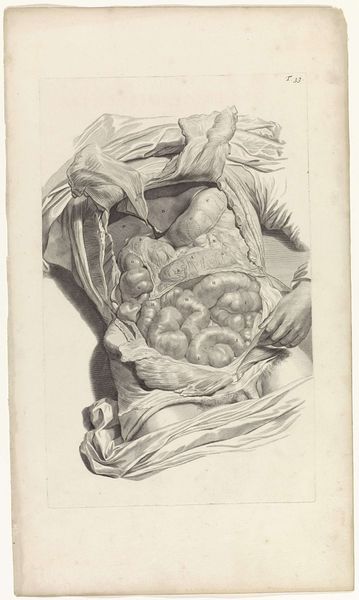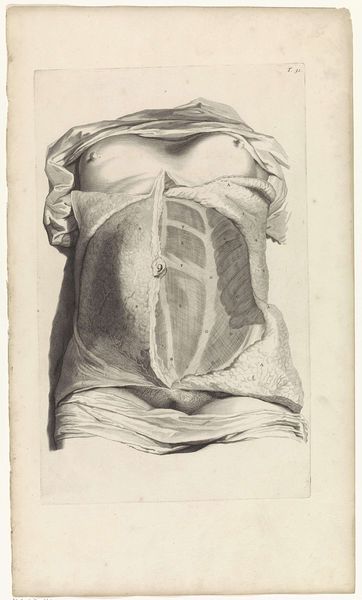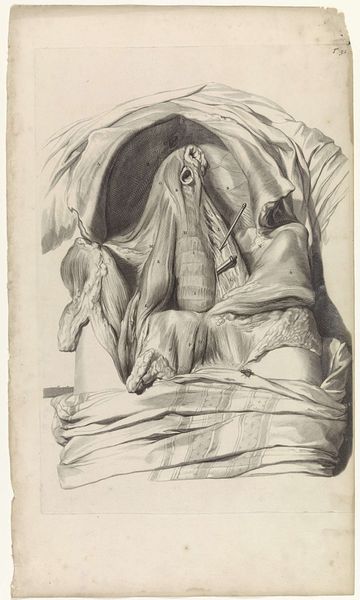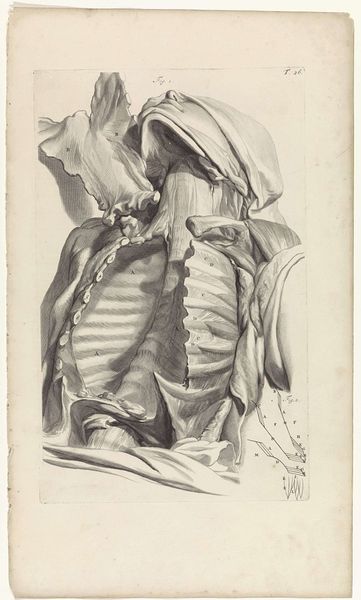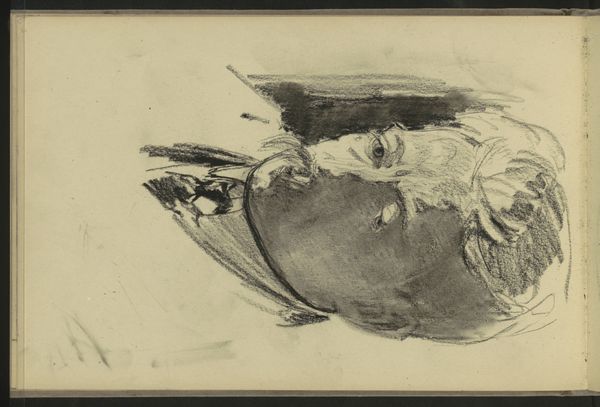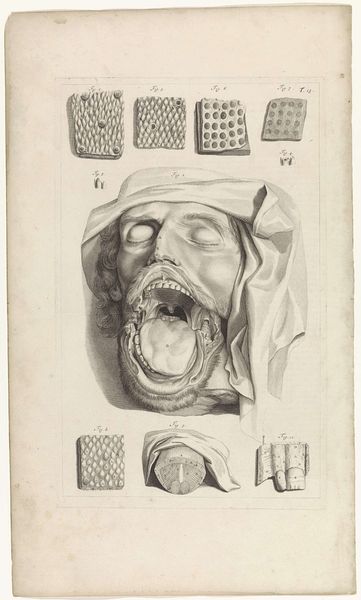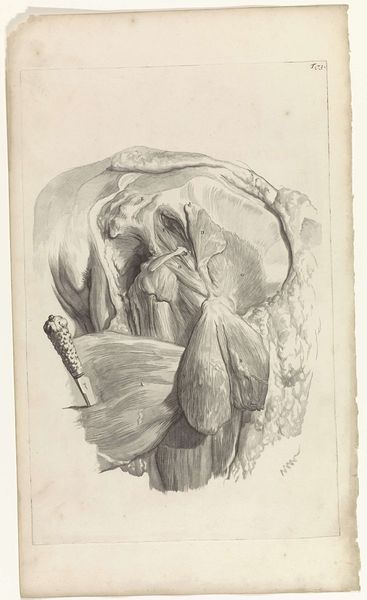
Anatomische studie van de buitenkant van de baarmoeder van een zwangere vrouw 1685
0:00
0:00
pietervangunst
Rijksmuseum
drawing, pencil
#
drawing
#
pencil sketch
#
pencil drawing
#
pencil
#
genre-painting
#
history-painting
#
academic-art
#
nude
Dimensions: width 323 mm, height 473 mm
Copyright: Rijks Museum: Open Domain
Editor: This pencil drawing, “Anatomical study of the exterior of the uterus of a pregnant woman,” created around 1685 by Pieter van Gunst, is… intense. The level of detail is astounding, almost unsettling. What context can you provide to understand why such an image was created and displayed? Curator: Indeed, it's striking. Remember that 17th-century anatomical studies were produced for scientific advancement, of course, but also circulated within elite circles interested in natural philosophy. Such depictions, while perhaps jarring to modern eyes, played a vital role in shaping medical knowledge, influencing social attitudes towards women's bodies, and, crucially, demonstrating male mastery of the human form. Do you see any markers of power here? Editor: Well, the woman's body is completely exposed and opened up. The cold, clinical nature feels detached from the reality of pregnancy and childbirth. Is it typical for art depicting pregnancy to have such an impersonal tone? Curator: The impersonal tone isn’t entirely surprising. The work reflects a specific desire to understand anatomy through observation and documentation. The political act of such drawings at this time lies in visualizing and dissecting the female body and understanding and teaching how life occurs, a male-dominated area of study. This contributed to excluding women from possessing similar scientific and artistic agency. Notice how the drawing also idealizes, perhaps even aestheticizes, the internal form, despite its graphic nature. Editor: That's a powerful point about the intersection of scientific study and social control. I never would have considered that by only men drawing anatomy they could have agency over a women's form. So much to learn! Curator: Exactly! Consider this image as a lens through which to examine shifting power dynamics and knowledge production during that period. We also have to wonder who the audience was for this drawing, and why such explicit scientific drawings of pregnancy would be for display at the Rijksmuseum. Editor: I learned how medical advancements intersect with existing power dynamics. This pencil drawing serves as an historical document which illustrates both the social power and the political context in seventeenth century Europe. Curator: And for me it is interesting to see this image as an influencer in how modern day gynecologists visualize the womb, especially while operating in a field still dominated by men.
Comments
No comments
Be the first to comment and join the conversation on the ultimate creative platform.
